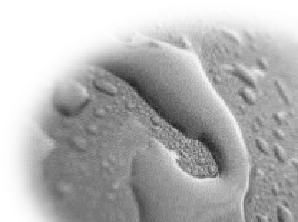Fluid Film
Simcenter STAR-CCM+ allows you to model the distribution and transport of a thin layer of liquid—a fluid film— on solid surfaces. Application areas include vehicle rainwater management, selective catalytic reduction (SCR), and lubrication.

Simcenter STAR-CCM+ can simulate fluid accumulation on surfaces through the following mechanisms:
- Droplet impingement: droplets carried along in the gas impinge on surfaces to form a liquid layer. This mechanism requires interaction with other multiphase modeling approaches such as Lagrangian Multiphase (LMP), Dispersed Multiphase (DMP), and Eulerian Multiphase (EMP).
- Condensation from the gas phase
- Film inflow boundary
- Initial film thickness specification
- User source
The fluid film can reduce in thickness or be removed through the following mechanisms:
- Wave stripping where droplets are stripped due to wave instabilities in the fluid film.
- Edge stripping where droplets are stripped when the fluid film flows over a sharp edge.
- Evaporation
- Boiling
- Film outflow boundary
The fluid film model solves transport equations for mass, momentum, energy, and species in tangential direction. It assumes a piecewise-linear profile for temperature, and species across the film. For laminar flow a parabolic velocity profile is assumed. The turbulent fluid film model solves for the flow variables such as wall shear stress and the film surface velocity as detailed in Fluid Film Turbulence.
- Continuity Equation
-
The equation that governs the film mass conservation is as follows:
(2721)where is the film density, is the film velocity, and the subscript denotes the fluid film values. The quantity is the mass source/sink per unit area. Contributions to the mass source come from droplet impingement, film stripping, mass transfer, or user-defined sources.
Eqn. (2721) is used to calculate the film thickness . It is specific in the sense that the volume and the surface are functions of the film thickness and its spatial distribution.
- Momentum Equation
-
The momentum conservation equation is:
(2722)where is the momentum source corresponding to the mass source , is the pressure, is the body force vector, and is the viscous stress tensor within the film. The kinematic and dynamic conditions at the interface between the film and the surrounding fluid (film free surface) are satisfied:
(2723)(2724)Quantities with the subscript are associated with the fluid film. Otherwise, they relate to the surrounding fluid. Assuming that the normal components of the viscous and convective terms are negligible, the pressure distribution within the fluid film is obtained from Eqn. (2722) as:
(2725)where is the wall surface unit vector pointing towards the film, and is the local coordinate normal to the wall. Eqn. (2725) assumes that the force is applied at the film free surface.
- Energy Equation
-
The fluid film energy conservation equation is:
(2726)where is the film total energy, is the film total enthalpy, is the film heat flux, is the film viscous stress tensor, and is the body force per unit volume. is the energy source term per unit film area. Contributions to the energy source or sink come from droplet impingement, film stripping, evaporation, condensation, or user-defined sources.
- Species Mass Conservation Equation
-
For a multi-component film, the mass conservation equation for the -th species is:
(2727)where is the mass fraction of species , and is the molecular Schmidt number. The quantity is the mass source or sink for species .
- Volume Fraction
-
The volume that the fluid film occupies is subtracted from the volume of the gas phase in the cells adjacent to the film. The volume fraction of the film, in the neighboring gas cell, is computed as:
(2728)where is the film volume (the area multiplied by the film height), is the volume of the neighboring cell, and is the maximum volume fraction.
The available volume fraction for the neighbouring gas phase (corresponding to the void fraction) is defined as the ratio of volume that is occupied by all neighbouring fluid phases to the total cell volume as given by Eqn. (872). For more information on how the fluid film phase influences the neighbouring phase flow equations, see Volume Partitioning.